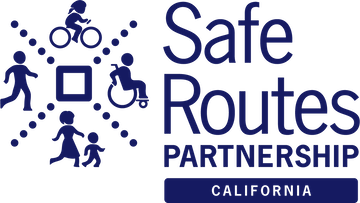

With this year’s cap-and-trade revenue budget (also known as the Greenhouse Gas Reduction Fund or GGRF) finalized by the Governor’s signing of AB 1613, the agencies implementing the programs that receive this funding are busy promulgating guidelines for the next call for applications. The full list of programs receiving funding from the budget is available here (note that there is also a continuous appropriation to these programs that is separate from the annual budget process). Here’s a quick summary of the programs that affect active transportation:
- Active Transportation Program (ATP): The California Transportation Commission has released guidelines for how to spend the $10 million in ATP funds received from GGRF, detailed in a separate blog post here.
- Transformative Climate Communities: This is a new program created by AB 2722, and the GGRF budget provides $140 million. It will provide funding for “broad-based greenhouse gas emission reduction projects that provide local economic, environmental and health benefits to disadvantaged communities.” The guidelines have yet to be released, so we do not yet know how active transportation projects will fit into these grants, but the Strategic Growth Council has released a Notice of Proposed Rulemaking that targets three specific locations for this funding: the City of Fresno (50%), the City of Los Angeles (25%) and a yet-to-be-determined third location. Comments on this proposal are due November 7. For more information on the TCC program, check out this website.
- Affordable Housing Sustainable Communities: The Strategic Growth Council (SGC) just announced the award recommendations for the 2016 cycle. The staff report lists awards for 25 projects around the state, totaling almost $290 million. SGC received 130 applications asking for over $1.1 billion, so this program, like ATP, is heavily oversubscribed. Projects were scored on twelve criteria focused on greenhouse gas emission reductions and policy goals. Altogether, the funded projects are expected to reduce an estimated 350,000 metric tons of greenhouse gas emissions. The majority of funding will to go affordable housing projects (80%), but about one-fifth ($55 million) will go to “sustainable transportation” infrastructure and amenities, 87% of which will be spent on infrastructure improvements. This is a significant change from the last round of funding, where most of the funding went to amenities like bike racks. This was the result of a change in the guidelines between the first and second cycles that distinguished between infrastructure and amenities. In terms of geographic distribution, which has been a politically sensitive issue with AHSC and other cap-and-trade programs, approximately one-third of awards will go to the Bay Area (MTC) region and a quarter to the Southern California (SCAG) region. With respect to disadvantaged communities, 22 of the 25 projects (85%) will benefit disadvantaged communities, totaling $246 million in investments. The full list of funded projects is available here and the project summaries are available here. The guidelines for the 2017 cycle of AHSC will be released in early 2017 and the call for applications in the spring. In the meantime, SGC plans to hold listening sessions around the state this fall to learn what is working, and what is not, with the current guidelines and application process. This will also allow SGC to observe several cap-and-trade auctions so that it can determine the approximate amount of funding it will receive next year.
- Sustainable Communities Planning Grants & Incentive Best Practices Pilot: SGC has also announced another round of funding for its popular Sustainable Communities Planning Grants program. The funding comes from Proposition 84 revenue rather than cap-and-trade, however. The draft guidelines have been released in advance of the October SGC meeting. This time there is a focus on “Incentive Best Practices Pilot” Programs, which are meant to help local governments implement best practices and create replicable pilots throughout the state. Pilot applicants may apply for up to $50,000 to support the development and/or implementation of a specific portion of a land use plan, land protection or management practice, or development project, that targets sustainable development and the State’s climate policies with the express intent of 1) implementation of that project or plan; and 2) identification of a best practice to share amongst land use planning and policy peers. This small grant is not intended to fund a long-range plan or project in its entirety. Proposed Pilot applications must support local implementation of state policies, with a focus on creating more resilient communities through climate adaptation and mitigation, with a priority focus on disadvantaged communities. More details are available in this staff report and the draft guidelines document.
Other Guidelines: Several other programs including Low Carbon Transit Operations (LCTOP) and Urban Greening will be releasing guidelines for their next round too. We will be closely following these and other cap-and-trade guidelines with our partners in the Sustainable Communities for All Coalition and keep updating this blog as we gather new details.


